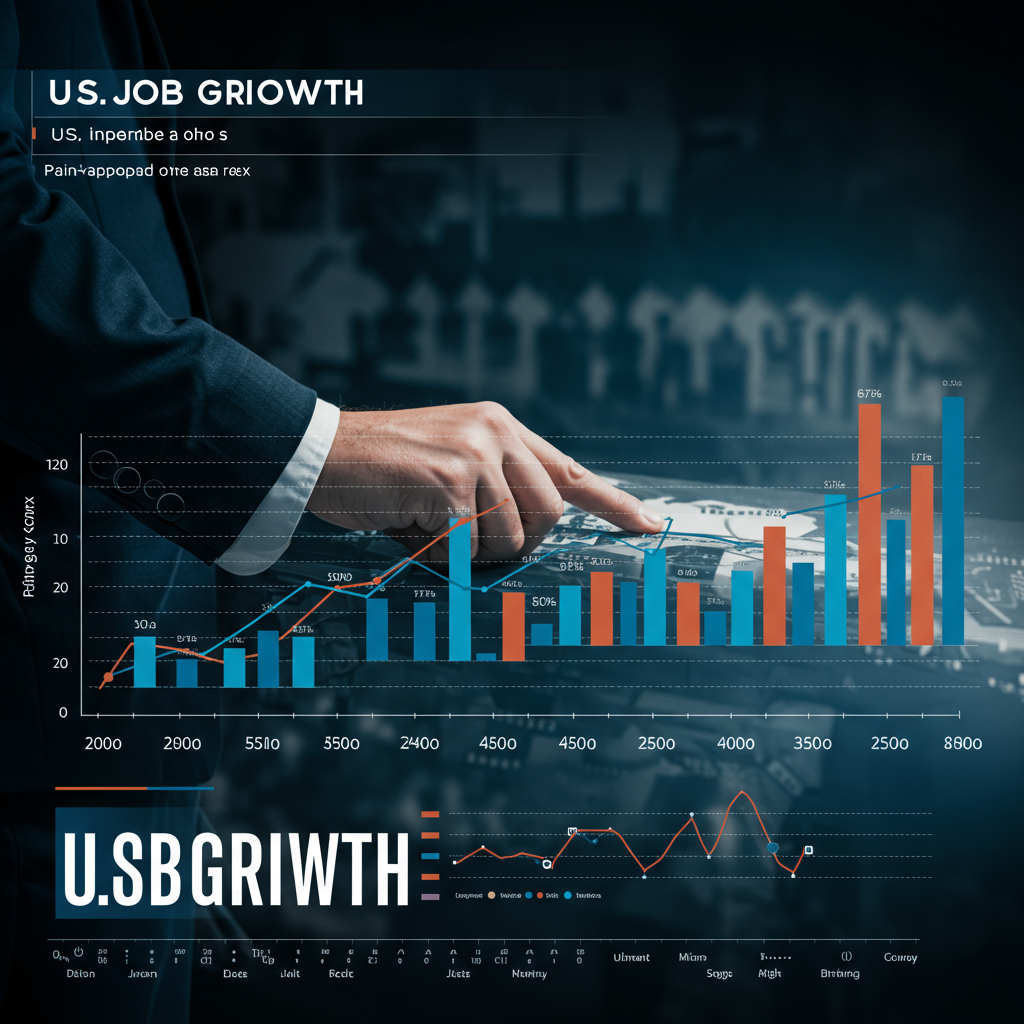The latest report on the American workforce delivers a complex picture. While the overall number of jobs added surpassed predictions, a closer look reveals shifting dynamics. Understanding these figures is crucial for grasping the current state of the US economy. The data provides valuable insights for businesses, job seekers, and policymakers alike. Let’s explore what the June 2025 report tells us about hiring trends.
Decoding the June 2025 US Jobs Report
Official figures from the Bureau of labor Statistics (BLS) show that US employers expanded their payrolls significantly last month. Specifically, the economy added 147,000 jobs in June. This number arrived ahead of many economists’ forecasts. Simultaneously, the nation’s unemployment rate saw a notable decrease. It fell to 4.1%. This dip suggests that finding work remains relatively feasible for many Americans. The report signals continued robustness in certain parts of the labor market. However, the details within the report offer a more nuanced perspective on the overall hiring landscape.
The Official BLS Data Release
The Bureau of Labor Statistics publishes this data monthly. It is one of the most closely watched economic indicators. The June 2025 report was released on Thursday. It compiles extensive survey data from businesses and households. This helps paint a picture of employment and unemployment across the country. The payroll number reflects how many positions were added or lost. The unemployment rate shows the percentage of the workforce actively seeking jobs but unable to find them. A lower rate generally indicates a tighter labor market. The latest figures certainly capture attention across financial markets and policy circles.
The Driving Force: An Unusual Hiring Surge
A significant portion of the job growth in June came from a specific sector. Public education hiring saw an unusual surge. This increase in state and local government employment played a major role in boosting the overall payroll number. Such strong gains in public education are not always typical in monthly reports. Often, public sector hiring can show more seasonal patterns. This specific jump warrants closer examination. It questions whether this level of growth is sustainable or a one-off event.
Impact of Government Employment
Growth in government payrolls directly contributes to the national job total. State and local governments employ millions of workers. Changes in this sector can heavily influence overall employment figures. The June surge suggests increased hiring activity within public schools or related services. This could be driven by budget changes, returning staff, or new programs. It’s important to note that these jobs differ from private sector employment. Their growth can signal trends distinct from the broader business environment. Analyzing this split provides deeper economic understanding.
A Closer Look: Slowdown in Other Sectors?
Despite the headline beat on job growth, the report contains a crucial detail. The strength in public education hiring appears to have masked a slowdown elsewhere. Hiring activity across the rest of the economy did not keep pace. This suggests potential weakness or hesitation in other sectors. Understanding which sectors saw slower growth is key. It could indicate challenges facing private businesses. These challenges might range from economic uncertainty to specific industry pressures. The report highlights this divergence clearly.
Contrasting Public and Private Trends
The contrast between public sector gains and a potential private sector slowdown is significant. Private businesses are often more sensitive to economic cycles and consumer demand. Slower hiring here might signal cautiousness among employers. They could be delaying expansion plans or waiting for more clarity. Meanwhile, public sector hiring can be influenced by different factors. These include government budgets and policy priorities. The June report suggests these two parts of the economy are currently on different trajectories. This split data presents a mixed signal for the overall economic outlook.
What Does 4.1% Unemployment Mean Today?
The drop in the unemployment rate to 4.1% is noteworthy. This rate is historically low for the United States. A low unemployment rate generally signifies a tight labor market. In such a market, there are more job openings relative to the number of available workers. This situation often gives workers more leverage. They may find it easier to secure employment or negotiate better wages and benefits. For businesses, a tight labor market can mean challenges in finding qualified candidates. It might increase hiring costs as well.
Employer Behavior and Layoffs
The report also indicates that employers remain hesitant to lay off workers. This reluctance contributes to the low unemployment rate. Even if hiring slows in some areas, companies may be holding onto their existing staff. This could be due to difficulty finding replacements later. It might also reflect optimism about future business conditions. The decision to retain employees, even during periods of slower growth, impacts labor market stability. It provides a degree of security for the current workforce.
Implications for the US Economy
This latest jobs report offers a complex snapshot of the US labor market. The overall number is positive, beating forecasts. However, the composition of that growth is crucial. The reliance on public education hiring raises questions. Is the underlying private sector momentum weakening? The low unemployment rate of 4.1% remains a positive indicator of labor market tightness. It suggests the demand for workers, overall, is still healthy. But the uneven growth patterns require careful analysis.
Mixed Signals and Future Outlook
Economists and policymakers will be closely studying these numbers. The mixed signals could influence future economic decisions. For example, the Federal Reserve monitors employment data closely when considering interest rate policy. A tight labor market can sometimes fuel inflation concerns. However, a slowdown in private sector hiring might suggest softening economic activity, potentially reducing inflation pressure. The June 2025 report provides data points that support differing interpretations of the economy’s direction. Future reports will be needed to clarify if the public sector surge continues or if private sector hiring rebounds. Businesses should remain agile, monitoring hiring trends specific to their industries. Job seekers can note that while the overall market is tight, conditions may vary significantly by sector and location.
Frequently Asked Questions
What specific types of jobs drove the increase in June 2025?
The latest Bureau of Labor Statistics report highlighted that a significant portion of the job growth in June came from public education hiring. This includes employment at state and local government educational institutions. While the report indicated a total gain of 147,000 jobs, the strength was heavily concentrated in this area, offsetting slower growth in other parts of the US labor market.
How does the 4.1% unemployment rate compare to recent trends or historical averages?
An unemployment rate of 4.1% is considered historically low for the United States. In recent years, rates below 5% have generally indicated a tight labor market. This figure is below the long-term average and suggests that, as of June 2025, most individuals seeking employment were able to find it. The drop from the previous month further signals ongoing demand for workers.
What could this mixed jobs report signal for future hiring trends or economic policy?
This report sends mixed signals. The strong overall US job growth, boosted by public hiring, paired with low unemployment (4.1%), suggests continued labor market tightness. However, the indicated slowdown in private sector hiring might signal caution among businesses or potential headwinds for economic expansion. Policymakers, like the Federal Reserve, will analyze these divergent trends to assess inflationary pressures and overall economic health, potentially influencing future decisions on interest rates or government spending priorities.



